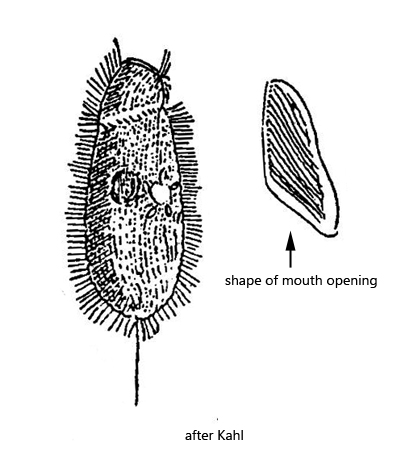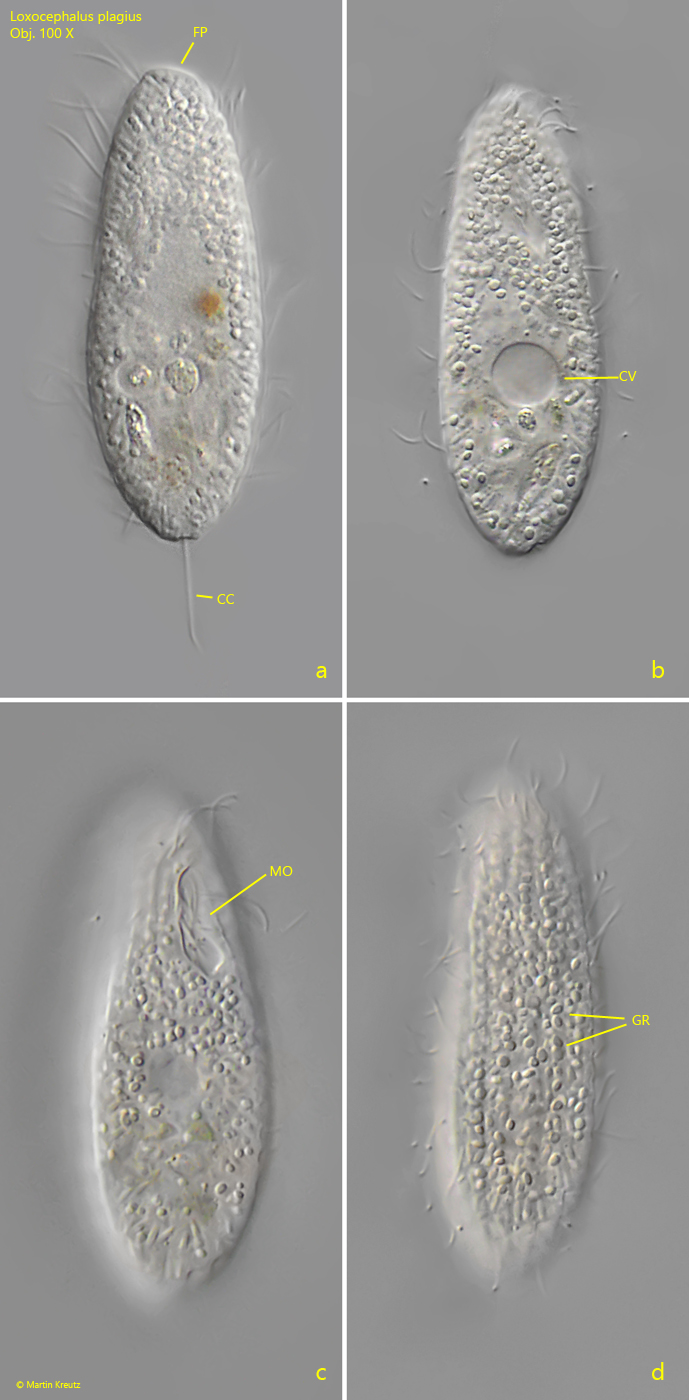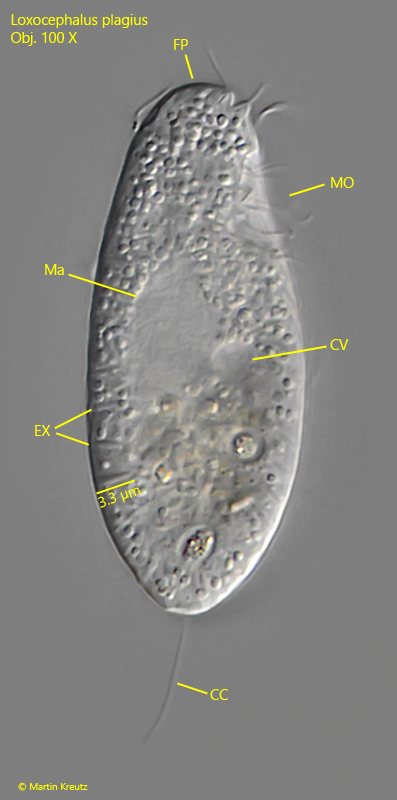Loxocephalus plagius
(Stokes 1885) Kahl, 1931
Most likely ID: n.a.
Synonym: n.a.
Sampling location: Simmelried
Phylogenetic tree: Loxocephalus plagius
Diagnosis:
- body elongated oval or cylindroid, often dark colored
- length 50–65 µm
- apical front plate present
- transverse ring of long adoral cilia in anterior third
- oral opening almost crescentically shaped
- spherical or broadly oval macronucleus in mid-body
- one contractile vacuole in mid-body
- conical shaped extrusomes, 3.0–3.5 µm long
- numerous granules in cytoplasm, not ring-shaped
- one caudal cilium

So far I have only found Loxocephalus plagius in the Simmelried. However, as it is a very common ciliate, I assume that it also occurs in my other sites with a layer of mud and rotting plant parts.
Loxocephalus plagius is very easy to confuse with Dexiotricha granulosa, as both species are about the same size. In Dexiotricha granulosa, however, the granules in the cytoplasm are ring-shaped and the cilia (inclusive the caudal cilium) are rigid and straight. In addition, the mouth opening of Dexiotricha granulosa is smaller and the left side is C-shaped. In Loxocephalus plagius the mouth opening is elongated, almost crescent-shaped and on the left edge there is a characteristic angle of about 120 °, as also drawn by Kahl (s. drawing above and fig. 1 c).
In my population of Loxocephalus plagius I could find distinct, conically shaped extrusomes, which are 3.0–3.5 µm long and are arranged especially in the posterior half of the body below the pellicle (s. fig. 2). These extrusomes are not mentioned or drawn by Kahl in his very short description.

Fig. 1 a-d: Loxocephalus plagius. L = 53 µm. Different focal planes of a freely swimming specimen. Note the crecentic shape of the mouth opening (MO) and the irregularly, not ring-shaped granules (GR). CC = caudal cilium, CV = contractile vacuole, FP = frontal plate. Obj. 100 X.

Fig. 2: Loxocephalus plagius. L = 55 µm. A slightly squashed specimen from right. CC = caudal cilium, CV = contractile vacuole, EX = extrusomes, FP = frontal plate, Ma = macronucleus, MO = mouth opening. Obj. 100 X.